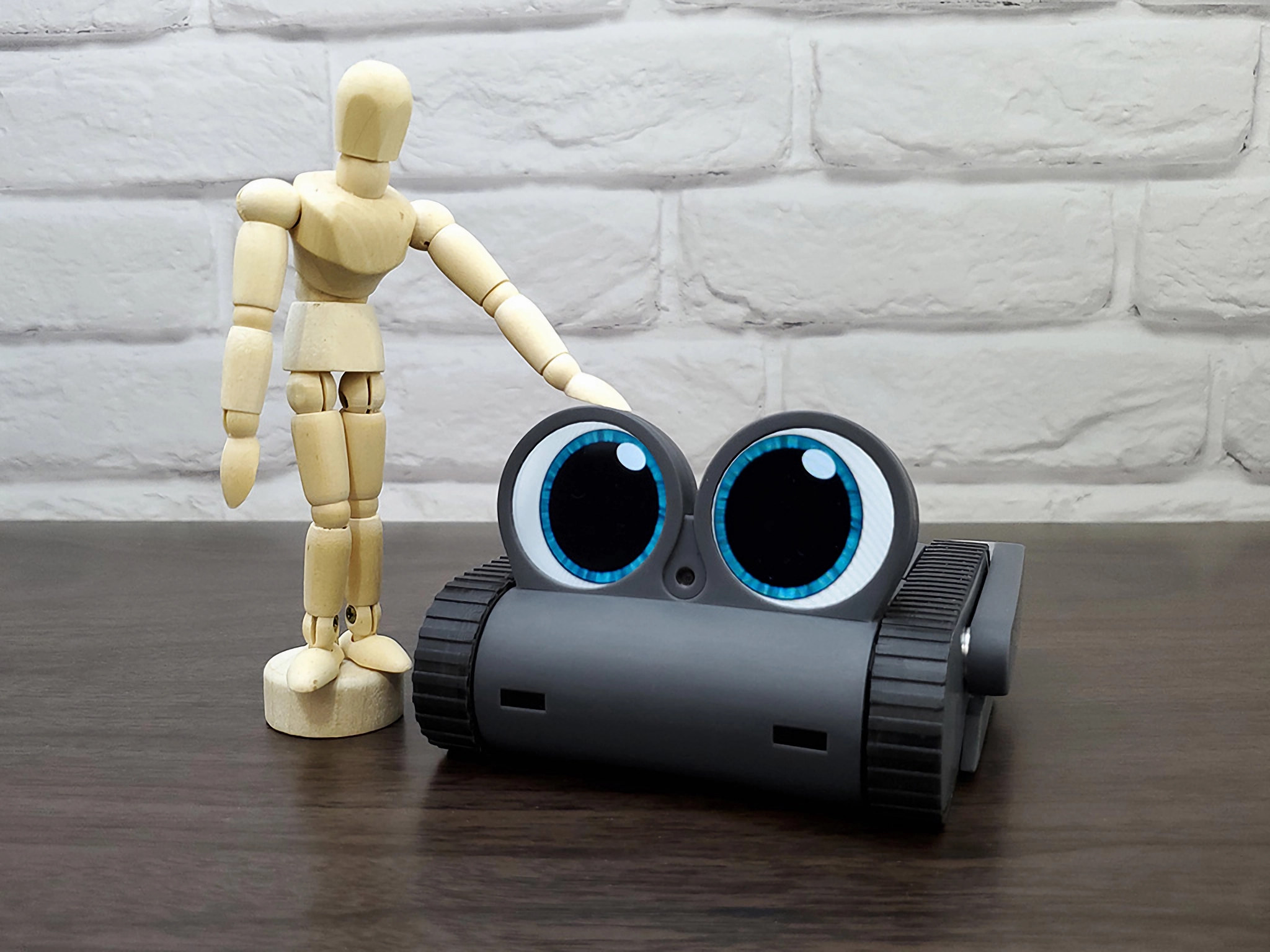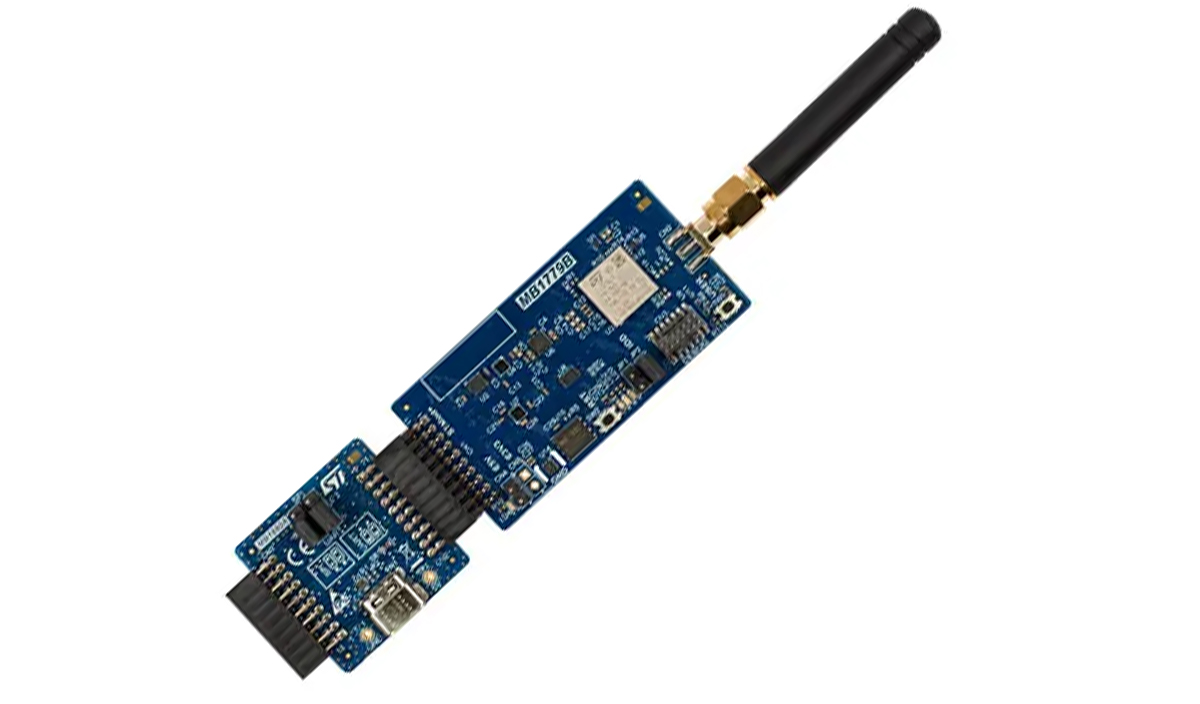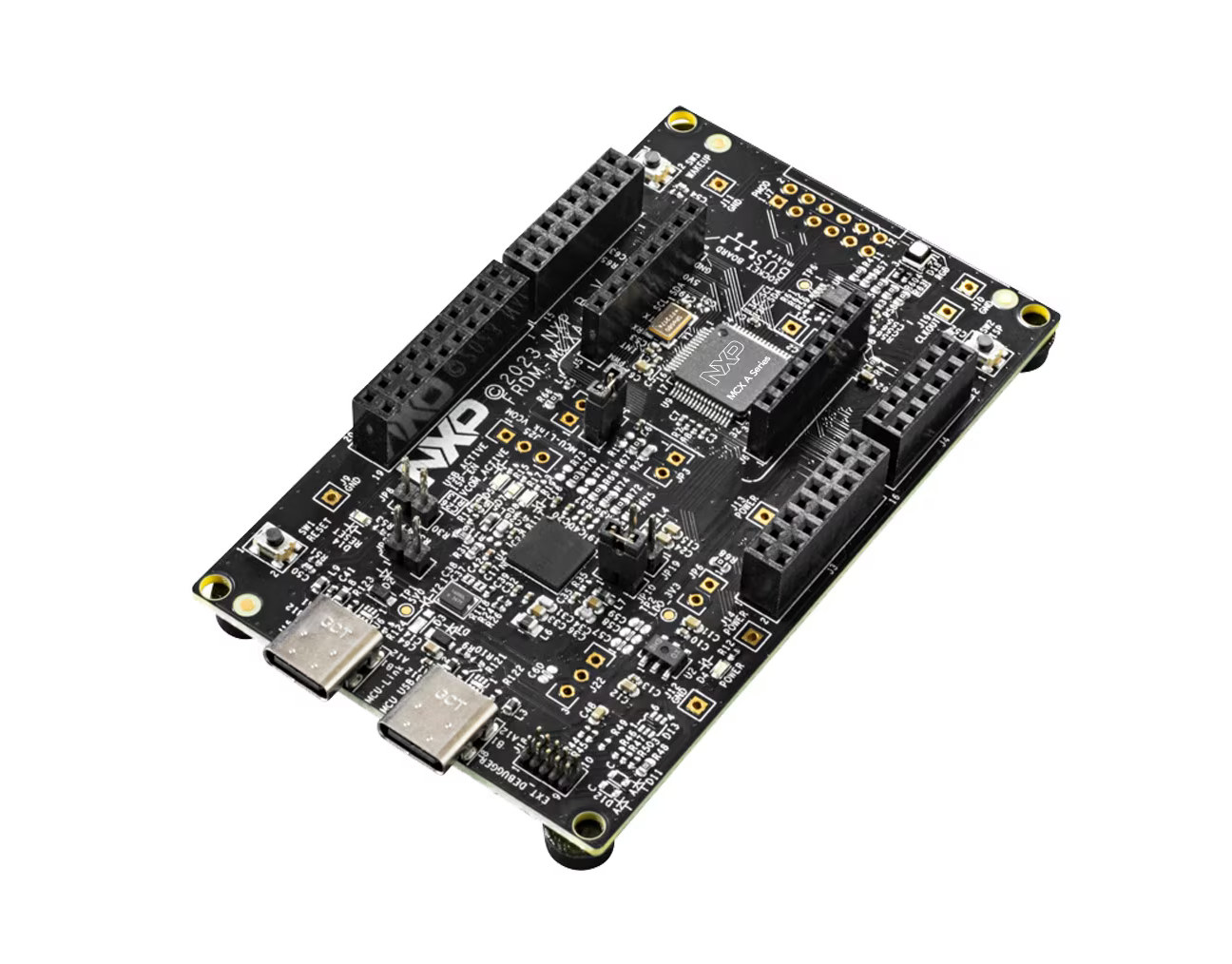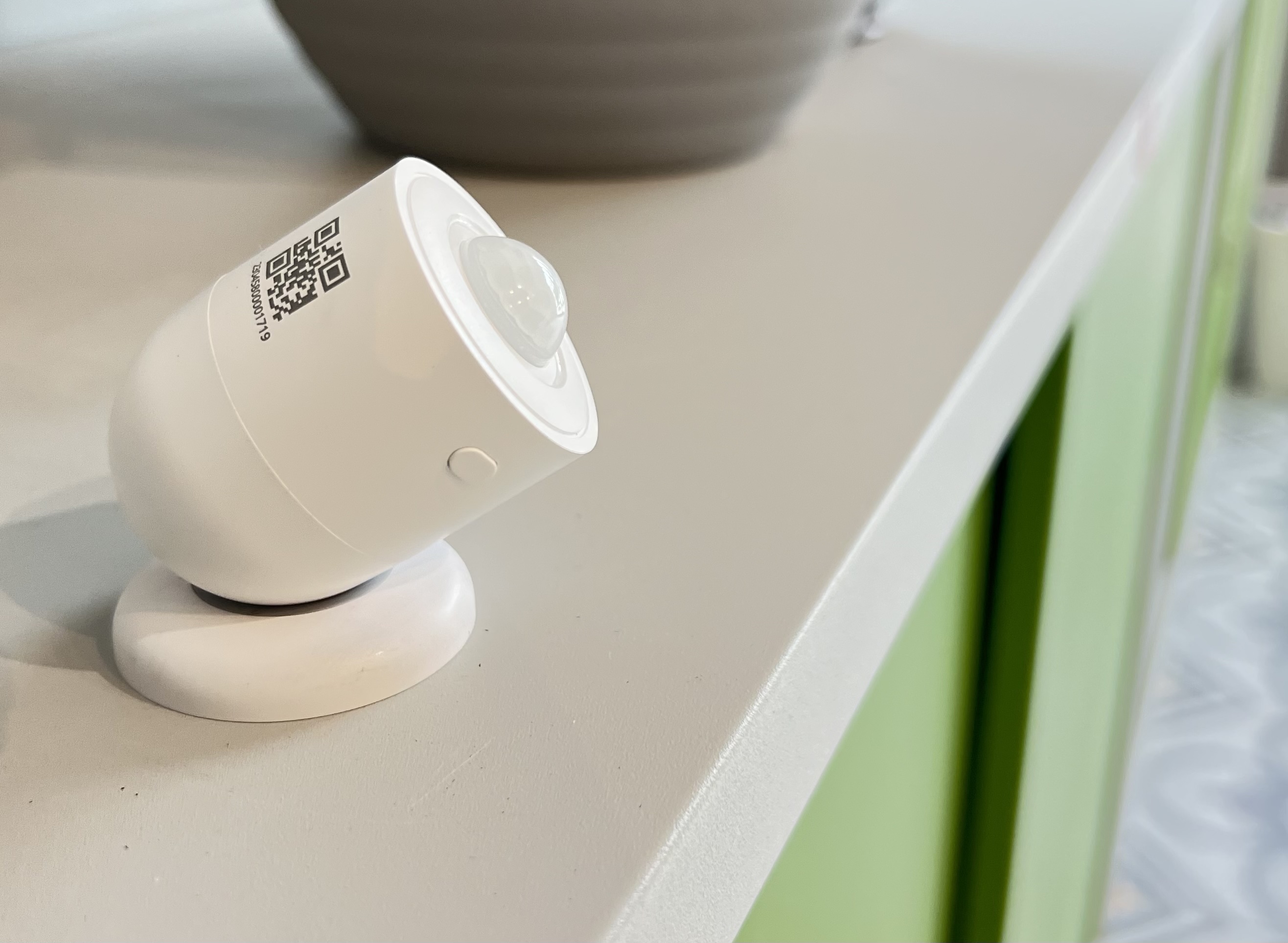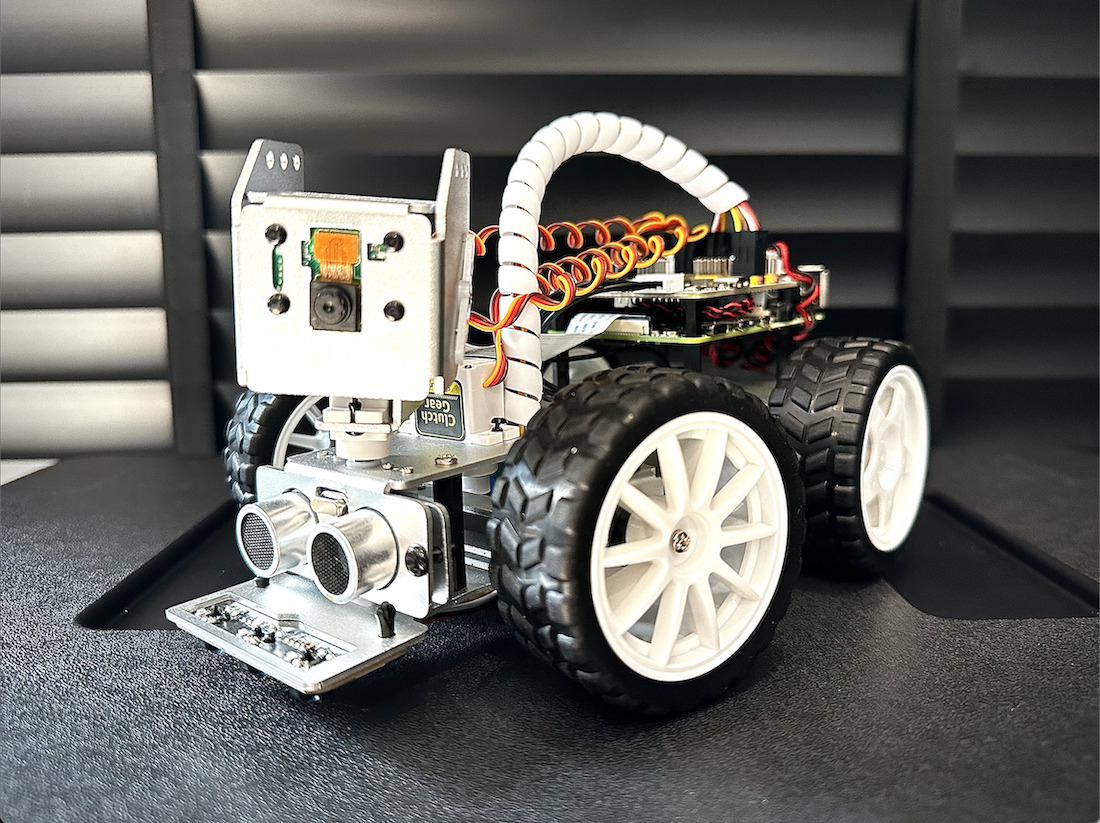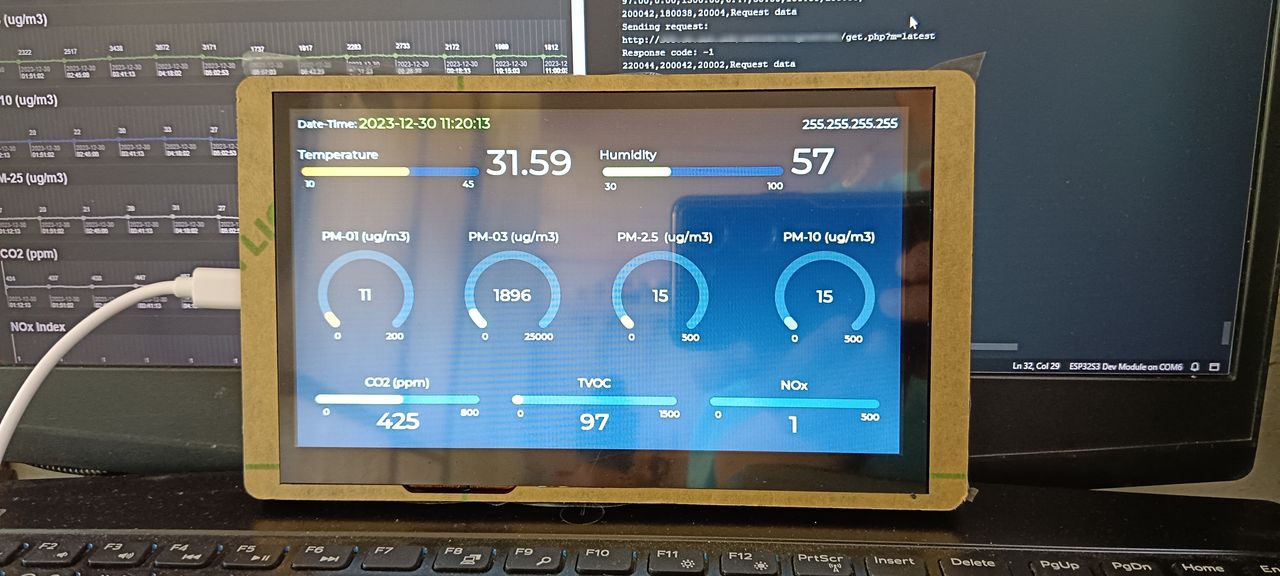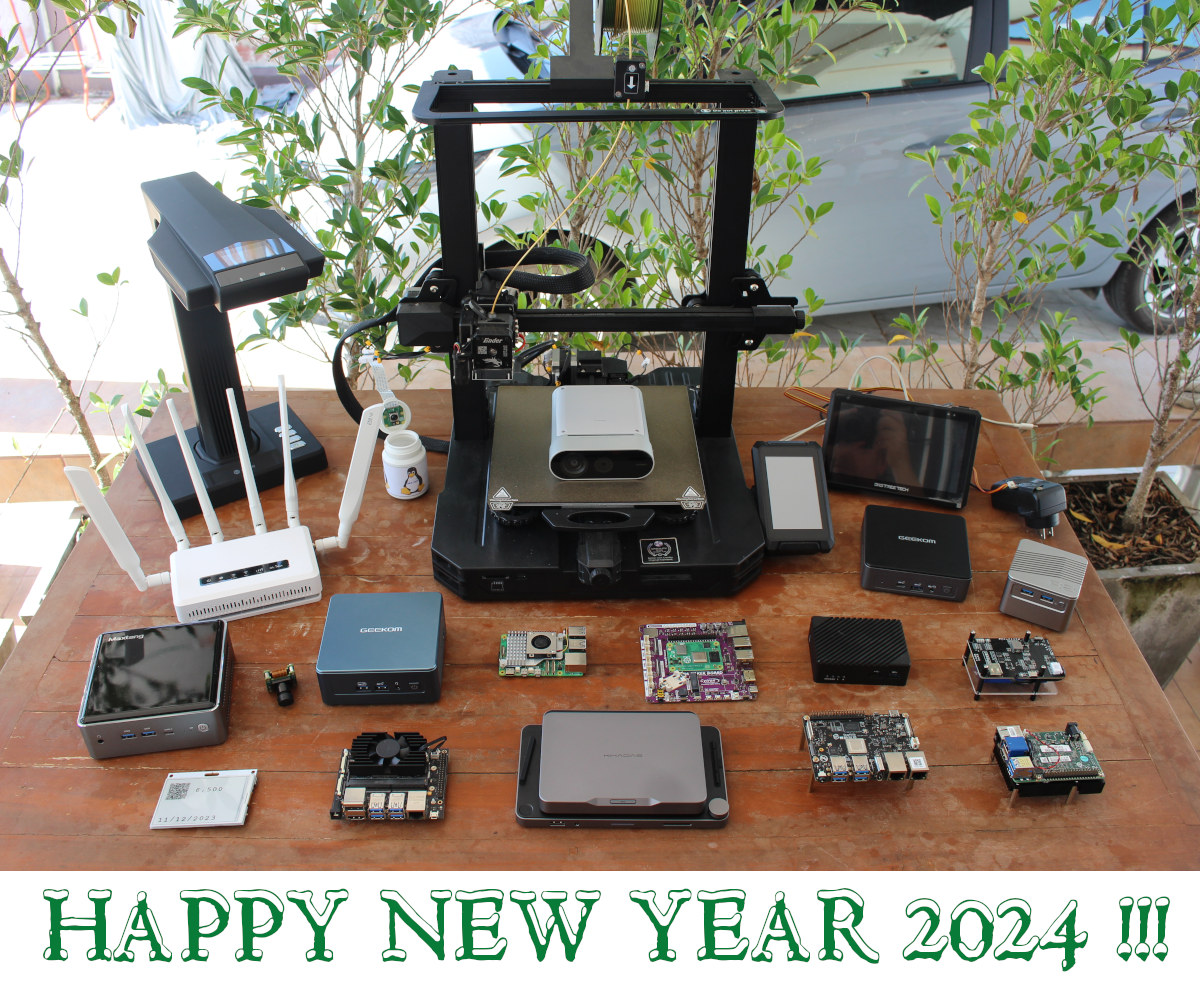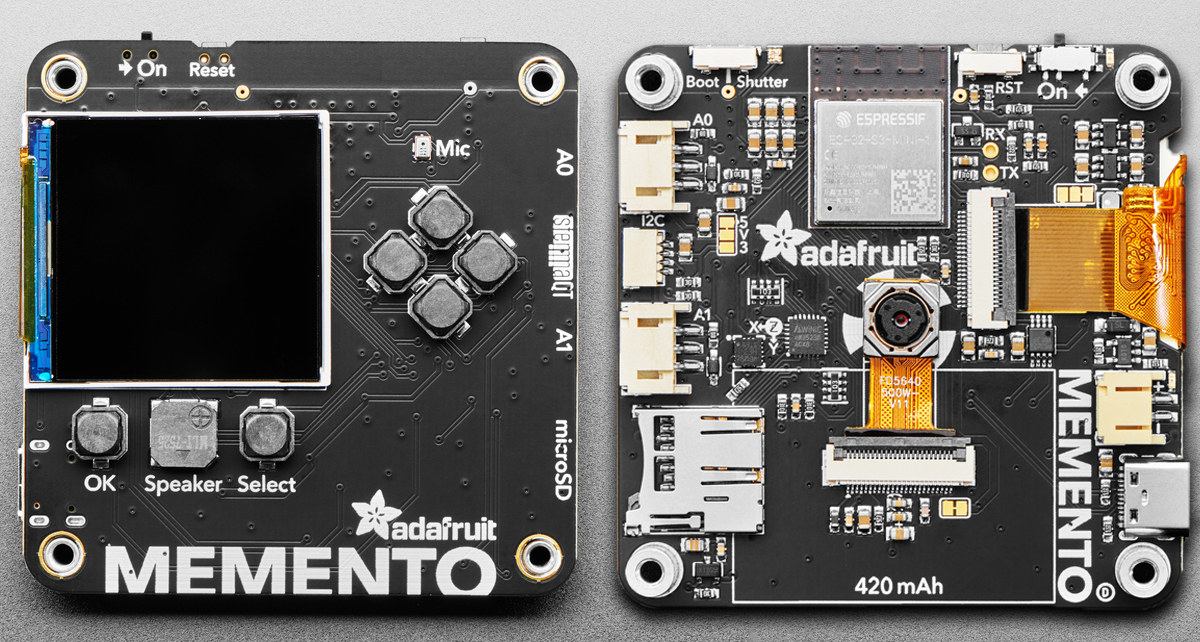Limitbit Doly is a cute little autonomous robot with two continuous tracks, two small arms controlled by servos, two round color displays acting as the eyes, and various sensors, all controlled by a Raspberry Pi CM4 system-on-module. The robot can be used for STEM (Science, Technology, Engineering, and Mathematics) education or as a developer platform. AI workloads can also run on the Raspberry Pi CM4 module taking sensors, camera, and microphone inputs, with the robot interacting with the user through the built-in stereo speaker and two eyes. In practice, that means Doly supports features such as face recognition and smart audio with the robot capable of recognizing its owner and responding to voice commands. Doly specifications: System-on-Module – Raspberry Pi CM4 Lite model CM4101000 (1GB RAM, Wireless) by default, but also supports other CM4/CM Lite modules with wireless Storage – MicroSD card slot Display – 2x high-resolution color displays (the […]
STMicro STM32WL5MOC SiP Module is pre-certified for LoRaWAN & Sigfox networks
STMicroelectronics has recently introduced the STM32WL5MOC system in package (SiP) module with a dual-core STM32 microcontroller, sub-1 GHz RF radio, power supply, and passive components into a 10×10 mm LGA package. According to ST, the new chip uses the STM32WL module which we have seen used in Arduino MKR-inspired MKR Windy board, smart building, and many other LoRa devices. STMicroelectronics’ STM32WL, an Arm Cortex-M0+ microcontroller, operates in sub-GHz ISM bands (413-479MHz, 826-958MHz, and 169MHz later in 2024) for protocols like wireless M-Bus (mode N) and Wize. It supports multi-protocol and multi-modulation (4-(G)FSK, 2-(G)FSK, (G)MSK, DBPSK, DSSS, OOK, ASK) for various wireless standards (Sigfox, KNX, WiSun, mioty, M-Bus, etc.) and introduces power-saving features for up to 15 years of battery life. STM32WL5MOC SiP module specifications: Core Specifications: STM32WL55JC SoC with 32-bit Arm Cortex-M4 and Cortex-M0+ CPUs, up to 48 MHz. Adaptive real-time accelerator (ART Accelerator) for efficient flash memory execution. DSP instructions […]
NXP launches MCX A14x and MCX A15x Arm Cortex-M33 MCUs along with FRDM-MCXA153 development board
NXP has just announced the launch of the MCX A series Arm Cortex-M33 microcontrollers with the MCX A14x running up to 48 MHz and the MCX A15x running up to 96 MHz. The devices support up to 128KB flash and 32KB SRAM, offer I2C, I3C, and SPI sensor interfaces, and integrate support for BLDC/PMSM motor control. NXP first unveiled the NXP MCX general-purpose Arm MCU family with 30 times faster machine learning at Embedded World 2022, but at the time we had limited information although four series were planned with the MCX N Advanced series up to 250 MHz, the MCX A essential series up to 96 MHz, the MCX W Wireless series with Bluetooth LE, and the MCX L Low-power series. The MCX A series has just been launched, and the high-end MCX N also has its own product page with the N94x and N54x variants. We’ll focus on […]
Review of SONOFF SNZB-03P new Zigbee motion sensor with eWelink and Home Assistant
SONOFF continues to release new Zigbee products series including the wireless switches/buttons (SNZB-01P) and temperature and humidity sensors (SNZB-02P) that we reviewed last year. Today, we will review another new sensor, that is the Zigbee 3.0 motion sensor (SNZB-03P) and we’ll need a Zigbee Hub/Bridge/Dongle to receive Zigbee signals to make it work. The technology of this sensor remains PIR, which uses infrared waves similar to before. This is different from the Human Presence sensors that are gaining popularity, which use mmWave (millimeter wave, frequency 3-30GHz). Both types have their pros and cons. SONOFF has also recently released a Human Presence sensor, namely the SNZB-06P which we will review soon. The SONOFF SNZB-03P is suitable for applications where motion needs to be detected (staying standstill won’t work) and places where it is not feasible or practical to run power cables. The latter is advantageous compared to Human Presence sensors because […]
SunFounder PiCar-X 2.0 review – A Raspberry Pi 4 AI robot car programmable with Blockly or Python
SunFounder PiCar-X 2.0 is an AI-powered self-driving robot car using the Raspberry Pi 3/4 as the main processing board. It is equipped with a camera module that can be moved by a 2-axis servo motor, allowing the camera to pan or tilt, an ultrasonic module for detecting distant objects, and a line detection module. The PiCar-X robot can also perform computer vision tasks such as color detection, face detection, traffic signs detection, automatic obstacle avoidance, and automatic line tracking. The PiCar-X can be programmed with two computer languages: Blockly-based Ezblock Studio drag-and-drop program and Python, and the robot works with OpenCV computer vision library and TensorFlow for AI workloads. Finally, you can also control the robot through the SunFounder controller application on your mobile phone. The company sent us a sample of the Picar-X 2.0 for review, so let’s get started. SunFounder PiCar-X 2.0 robot overview The PiCar-X robot kit […]
Review of Elecrow’s 3.5-inch and 7.0-inch ESP32 display modules using Arduino programming
Hello, I’m excited to review the ESP32 display modules and HMI touchscreens from Elecrow with sizes ranging from 2.4 to 7.0 inches. For this review, Elecrow kindly provided me with both 3.5-inch and 7.0-inch models. While their screens differ in size, both modules share several components, such as the ESP32 microcontroller, making them adaptable options for a variety of projects. The Elecrow 7.0-inch display module is powered by the ESP32-S3-WROOM-1-N4R8 module equipped with an ESP32-S3 dual-core LX6 32-bit microprocessor, 4 MB of flash, 384 kB of ROM, and 512 kB of SRAM. This microcontroller supports both WiFi and Bluetooth for wireless communication. The 7.0-inch display itself is a capacitive touch screen with a resolution of 800×480 pixels. The display is controlled by the EK9716BD3/EK73002ACGB driver and is compatible with LVGL for additional functionality. In the case of the 3.5-inch display module, the main difference is the use of the ESP32-WROOM-32-N4 […]
2023 Year in review – Top 10 posts, statistics, and what to expect in 2024
It’s the last day and last article of the year, so we will look at some highlights of 2023, some traffic statistics on the CNX Software website, and speculate what interesting developments may happen in 2024. Looking back at 2023 The semiconductor shortage that had happened since 2020 started to fade away in early 2023, and supplies for most electronics components and devices seem to be adequate at this time, so that was a bright spot this year, and hopefully, it will stay that way in 2024 despite geopolitical tensions. We did not have any super exciting new Arm application processors from Rockchip, Amlogic, or Allwinner announced this year, although the Amlogic S928X penta-core Cortex-A76/A55 CPU started to show up in some 8K TV boxes. The launch of the Raspberry Pi 5 SBC with a Broadcom BCM2712 quad-core Cortex-A76 processor was probably the main highlight for Arm on this side […]
MEMENTO is an ESP32-S3-based, CircuitPython or Arduino programmable DIY camera module
Adafruit’s new MEMENTO – Bare Board Camera module is powered by the ESP32-S3 and can be programmed with CircuitPython or Arduino. The module includes a camera with an OV5640 sensor which features auto-focus capabilities and the board includes a 1.54″ 240×240 Color TFT to display the images. Previously we have covered many ESP32-based camera modules like the TinyML-CAM, the Arduino Nicla Vision, TTGO T-Camera, and many other camera modules that feature the OV5640 sensor you can check those out if interested. Features and Specifications of the MEMENTO ESP32 Camera Module: Processing and Connectivity ESP32-S3 Module Dual-core 240MHz Tensilica processor 8 MB Flash, 2 MB PSRAM WiFi and BTLE capabilities Camera and Display OV5640 Camera Module 5MP sensor 72-degree view Autofocus JPEG encoder 1.54″ Color TFT Display with 240×240 resolution Storage – MicroSD card slot (SPI) Ports and Expansion Two Digital/Analog Stemma Ports – JST PH-3 connectors for A0, A1, power, […]


